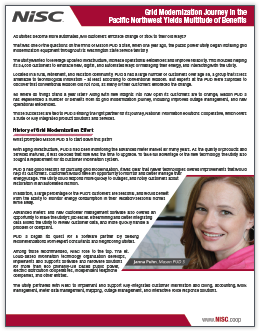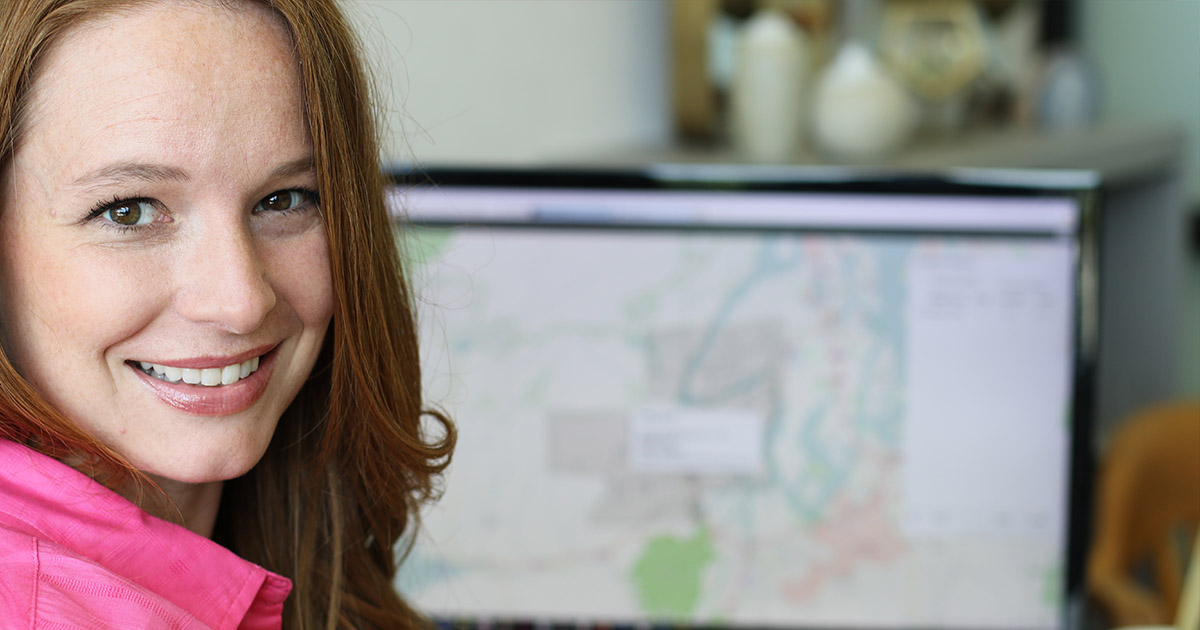 As utilities become more automated, will customers embrace change or stick to their old ways?
As utilities become more automated, will customers embrace change or stick to their old ways?
That was one of the questions on the mind of Mason PUD 3 staff, when one year ago, the public power utility began installing grid modernization equipment throughout its Washington state service territory.
The utility wanted to leverage updated infrastructure, increase operational efficiencies and improve reliability. This included helping its 34,000 customers to embrace new, digital, and automated ways of managing their energy, and interacting with the utility.
Located in a rural, retirement, and vacation community, PUD 3 has a large number of customers over age 55, a group that is less amenable to technological innovation – at least according to conventional wisdom. But experts at the PUD were surprised to discover that conventional wisdom did not hold, as many of their customers embraced the change.
So where do things stand a year later? Along with new insights into how open its customers are to change, Mason PUD 3 has experienced a number of benefits from its grid modernization journey, including improved outage management, and new operational efficiencies.
Those successes are tied to PUD 3 finding the right partner for its journey, National Information Solutions Cooperative, which offers a suite of fully integrated product solutions and services.
History of Effort
What prompted Mason PUD 3 to start down this path?
With aging infrastructure, PUD 3 had been monitoring the advanced meter market for many years. As the quality of products and services matured, it was decided that now was the time to upgrade. To take full advantage of the new technology, the utility also sought a replacement for its customer information system.
PUD 3 had good reasons for pursuing grid modernization. It was clear that newer technologies offered improvements that would help its customers. Customers would have an opportunity to monitor and better manage their energy usage. The utility could respond more quickly to outages, and notify customers about restoration in an automated fashion.
In addition, a large percentage of the PUD’s customers are seasonal, and would benefit from the ability to monitor energy consumption in their vacation/seasonal homes while away.
Advanced meters and new customer management software also offered an opportunity to make the utility’s job easier. Streamlining and better integrating data allows the utility to review customer data, and more quickly handle a problem or complaint.
PUD 3 began its quest for a software partner by seeking recommendations from expert consultants and neighboring utilities.
Among those recommended, NISC rose to the top. The St. Louis-based information technology organization develops, implements and supports software and hardware solutions for more than 800 primarily-US based public power, electric distribution cooperatives, independent telephone companies, and other entities.
The utility partnered with NISC to implement and support fully-integrated customer information and billing, accounting, work management, meter data management, mapping, outage management, and interactive voice response solutions.
After One Year, Good Results
One year into the project, Mason PUD 3 has installed 14,000 of 34,000 advanced meters. The utility expects to complete the meter installation next year.
In addition, each of the NISC software modules have gone live. Already, the outage management platform has proved “revolutionary” for the utility, said Justin Holzgrove, PUD 3 engineering services and community relations manager. “We’ve been able to give our customers better information, quicker, as soon as we know it, and in a visibly pleasing way.”
The software generates an outage map available through SmartHub. Among other things, customers can learn why the outage is occurring and the estimated time of restoration. In addition, customers can view the geographic area affected and the size of the outage. The map does not specify exact addresses. “We want to protect our customers’ privacy,” Holzgrove said.
A utility-only internal version of the map offers more detail, down to the meter level, to help workers do their job. If customers call, the utility can better answer questions because the details are right at hand.
Line workers can receive and update outage information real-time via AppSuite, as they work the outage from the field.
While the map is valuable, the integration with SmartHub Messenger and CallCapture, NISC’s interactive voice response software, netted some of the biggest surprises.
Customers still have the option of reporting outages the old-fashioned way – calling and talking to a person. But a growing number are opting for automation, reporting online via NISC’s SmartHub, or using an NISC-supplied button-response system on their phones.
About 90 percent of customers who get in touch with the utility about an outage now use automation – belying the idea that older customers don’t respond to new technology.
“That’s a really interesting switch we’ve seen. We’re seeing a pretty drastic increase of people using more automated ways, self-service, to report their outages,” said Mason PUD 3’s Joel Myer, public information and government relations manager.
Customer Communication and Education
Given that its demographic isn’t generally considered tech-savvy, it may seem surprising that Mason PUD 3 has been able to engage so many customers in its new platforms.
But it wasn’t done without a careful strategy developed and implemented by the utility.
PUD 3 sees installing advanced technologies as only one part of the equation to modernizing its electricity distribution system. Customer communication and education is the other half. So the utility put a lot of time into communicating with its customers, to the point where it has one of the largest utility social media followings on a per-meter basis – about 10,000 customers or 30 percent.
Intentional engagement on social media activity alone, has dropped the PUD’s customer call volume.
“The customer says, ‘Oh, they already know I’m out of power. I can see a picture on Facebook of the lineman restoring services,’” said Holzgrove.
Mason PUD 3 says it has grown a large social media following because the utility posts useful information that customers actually care about, rather than using it as a promotional tool.
It does so “in a tone and language that makes sense to the customer,” added Holzgrove. He said that internally, utility staff members try to use “simplicity language,” where they put PUD 3’s public information “through a filter. Are we using simplicity language or utility language? I think that really has helped our messaging.”
The utility’s communications effort focuses on the use of “advanced meters” as a part of an overall grid modernization. Mason PUD 3’s meters are only configured to relay usage information and the meter’s status back to the utility. This is the same information the utility has always collected from its meters. They are not configured to observe or communicate with consumer devices within the customer’s home. It was an important message to clarify. This is in part because of privacy concerns among a small group of customers.
But it’s also because the utility wants to underscore that the new meters are not just about automating meter reading. It’s not just a meter-upgrade project. The advanced meters are also a way to improve the overall engineering operation of the system so that it is more reliable and customer friendly; it is a holistic grid modernization process, according to Myer.
Integrated Nature of NISC System is Key to Success
Mason PUD 3 credits the success of its grid modernization project to the integrated nature of the NISC system. A utility representative can view a customer’s information all in one place, saving time for the worker, as well as the customer, on the phone.
“I don’t have to spend time on the phone with the customer saying, ‘Hang on a second,’” Myer said.
Customers benefit from the information in other ways too. For example, 28 percent of PUD 3’s customers are seasonal, with homes along the Puget Sound, Hood Canal, and the region’s many lakes. Sometimes they accidentally leave refrigerators or heaters plugged in while they are away, or a well pump might run continuously as a result of a leak.
This causes their energy bills to increase. When they call the utility to complain, a customer service representative can walk them through the problem by showing them their usage on the SmartHub app. The same detailed hourly usage data available to the utility, is also at the customer’s fingertips in an easy-to-understand format. The customer sees that it’s a problem with the house, not the utility’s billing system. Customers are often grateful for the knowledge, Holzgrove said.
An Added Benefit
A critical component of the grid modernization program was installation and expansion of a fiber optic network to channel data. It turns out that the network created an inadvertent benefit for Mason PUD 3 customers.
The utility has excess capacity on the network, so it is now proposing the development of “fiberhoods” for customers. The Fiberhood program builds and pays for fiber optic distribution networks in the many rural communities throughout its service territory that do not have high speed broadband. PUD 3 has a list of more than 4,000 customers who have expressed interest in connecting to the super-fast fiber optic network. The plan is now being reviewed by Mason 3 officials.
One year into its grid modernization journey, Mason PUD 3 has found its customers are very willing to embrace the changes. The utility has discovered new efficiencies, better outage management, and even the expansion of a new service for its customers.
This sponsored advertising feature was published Oct. 30, 2017, by the American Public Power Association.
